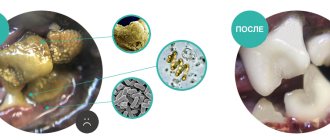Why are ticks dangerous for dogs?
These parasites feed on blood. To do this, they have a specially shaped mouthparts - with a proboscis and hook-shaped spines. With these spines, the insect pierces the dog's skin and is held there, and with its proboscis it sucks out the blood. During a bite, the parasite injects a secretion that reduces pain. This saliva may contain microorganisms that cause serious illnesses: ehrlichiosis, borreliosis or Lyme disease, babesiosis or piroplasmosis. All these diseases are severe and cannot be cured at home. At the first symptoms, be sure to contact your veterinarian.
Regardless of whether a tick is a carrier of pathogenic bacteria, it should not be left on the dog’s body:
- It will disturb the animal.
- It can go deep under the skin and cause inflammation, like a foreign body.
- A tick that has drunk blood is easy to crush. If it is infected, the infection can spread not only to the animal, but also to the owner.
How to recognize a tick on a dog
Having discovered a tick, you need to remove it immediately, otherwise the animal will develop a severe infection, which is detected only after several weeks. By this time, the dog's condition is noticeably deteriorating. In advanced cases, the pet's death occurs.
Every owner should know how to remove a tick from a dog at home. These recommendations are especially relevant if it is not possible to take the animal to the veterinarian as soon as possible.
After each walk, you need to carefully inspect the animal's fur. Parasites often cling to the head, especially the ears, paws, neck, stomach, and armpit area. In short-haired dogs it is easier to see and get them. Long-haired pets need to part their fur to notice the parasite. The dog may itch in the area where the tick was attached.
It looks like a spider. Its body can have different colors: black, gray, beige, brown. Adults have 4 pairs of legs. Those who have not reached puberty have 3 pairs. The parasite that has burrowed into the skin approximately doubles in size and looks like a mole or pea.
The insect feeds on blood at any stage of its development. He needs this to achieve the next phase, as well as reproduction. It is also necessary to distinguish the larva: it has 3 pairs of legs and a translucent body.
The tick breathes with its entire body; it is this property that is used to remove the blood-sucking parasite from the dog’s skin.
When and where to look for ticks in fur
In summer and autumn, when parasites are active, you need to examine your dog after every walk.
Short-haired dogs are especially susceptible to ticks, but long, dense hair will not protect against parasites. They just choose areas where the fur is a little shorter. This could be: the muzzle, ears, belly and groin, paws, especially between the toes, next to the pads.
The pet's body must be carefully examined as a whole, without missing individual areas. You can use a comb to part the fur and look as close to the skin as possible. To detect the smallest tick that has not yet had time to suck blood, you can take a magnifying glass.
Prevention
The basis of prevention is timely treatment and examination of the dog after each walk. For treatment against external parasites, the most effective modern means are tablets:
Nexgard
Bravecto
Simparica
Drops on the withers are also effective:
Advantix
Frontline
Collars are not very effective and can only be used in combination with other drugs.
How to rid a dog of a parasite
To remove a tick you need to prepare:
- wash and disinfect your hands, wear sterile or disinfected gloves;
- calm and secure the dog, it is advisable to wear a muzzle, even if the pet is very peaceful: no one knows how the animal will behave in a stressful and painful situation;
- It is advisable to carefully trim the hair at the site of the bite;
- prepare an antiseptic for treating the wound.
If your dog is nervous, he may be feeling pain from the parasite. To soften it, you can treat the skin around the bite with lidocaine.
Danger of ticks
To properly respond when your pet is attacked by a tick, you need to know some facts about them:
- Ticks go through four stages in their development. Only adults are dangerous for dogs. A nymph may still cling to the puppies.
- In an adult, the head (or rather the cephalothorax) is clearly separated from the abdomen and there are 4 pairs of legs. Nymph - looks like an adult, but has 3 pairs of limbs. If the parasite has already attached itself and drank blood, in appearance it will resemble a large dark mole.
- A hungry tick is brown in color, and when it drinks blood, it acquires a light shade and becomes closer to gray.
- In Russia, the two most common types of ixodid ticks that can be dangerous are the dog tick and the taiga tick. Despite the name “dog” tick, it clings to many species of animals and humans.
The main danger is not the ticks themselves, but the even smaller parasites they carry.
The most common of them:
- Ehrlichia canis - microorganisms that cause ehrlichiosis
- Borrelia burgdorferi is the bacterium that causes canine borreliosis, also known as Lyme disease.
- Babesia canis is a blood parasite (it penetrates red blood cells and destroys them), causing canine pyroplasmosis, or, another name, canine babesiosis.
You will not be able to know for sure whether your pet has been infected or not unless you have the parasite itself tested. In the worst case scenario, until the pet begins to show signs of illness, which may occur in a few weeks.
A tick can become infected through a bite (although the process is more like an injection). He injects his saliva into the bite site, which, in addition to a special substance (painkiller), may contain dangerous microorganisms.
Tick suction occurs as follows:
- with parts of the oral apparatus it cuts the skin and pushes its proboscis there;
- on the proboscis there are several teeth with which the tick is firmly held in the skin; it looks like a saw.
What not to do
To remove ticks from dogs, different methods are recommended. You can't just pull it out. There is a high probability that you will tear off the body of the tick, but the head will remain in the dog’s body. Removing one head is much more difficult at home. And if it is not removed, it will become a source of inflammation.
To remove ixodid ticks, some people advise pouring gasoline, oil, or other viscous or caustic liquids over them. This, of course, will kill the tick, but in agony it can go even deeper under the skin, secreting an increased amount of saliva with pathogenic bacteria. That is, it will only get worse.
You should also not remove a tick simply with your hands. In this case, you can not only tear the insect apart, leaving the head, moreover, when removed, the tick’s body, inflated with blood, will tear. If the tick is on the head, then infected blood can get on the mucous membrane in the mouth, nose, and eyes. It can get on wounds on the body of a dog or person. And because of this, the infection process will worsen.
So, you can’t pull out a tick:
- filling it with oil, gasoline, etc.;
- pulling it out in one motion;
- removing it by hand, without special tools.
The main task is to remove the entire tick without damaging it or leaving parts of it in the animal’s body.
What not to do
The Internet is full of bad advice. Some people are especially surprised - as soon as this comes to mind? Some people advise burning a tick with celandine juice, others – placing a copper coin on the full moon... It is clear that esoteric and folk methods are unlikely to work, so let’s consider myths that are closer to reality.
Let's find out!
1.
The most common myth is to pour oil on a tick and then it will come out on its own. No, it won’t come out, it can even go deeper and more actively secrete salivary fluid - namely, it contains protozoa, which are so dangerous for the dog. In any case, you will have to remove the tick yourself. In addition, the fact that the oil gets into the wound that the parasite will leave behind is not very good.
2.
Covering a tick with nail polish is also a dubious method. Yes, the tick can die, but you still have to pull it out yourself. In addition, local irritation and inflammation of the skin due to the chemical composition of the varnish in dogs has not been canceled.
3.
It's the same with gasoline. No less dubious method! It's better not to take risks. Remember about allergies and skin irritation?
4.
When removing a tick, do not pull sharply, trying to tear the tick away from the dog. Firstly, it’s unlikely to work, and secondly, if it does work, then the probability of leaving a proboscis in the dog is quite high (although there’s nothing wrong with that).
After all, there are simpler ways - why take extra risks?
Methods for removing ticks
There are several methods on how to properly remove a tick:
- With tweezers . You can use a regular one, but a curved one is more convenient. It needs to be heated over a fire or disinfected in some other way. The tweezers should be held as close to the dog's skin and parallel to it as possible. The parasite is grabbed not by the abdomen, but by the head. It is not pulled out, but twisted, like a loose tooth, rotated from side to side.
- With a thread . This is a more complex method. A loop is formed from the thread, which is used to wrap around the swollen parasite, like a noose. You also need to pull it out gradually, rocking it from side to side. The method is dangerous because the thread can easily crush the insect and cut off its head.
- Using a syringe . To do this, you need to place a syringe without a needle and with a cut off tip to the dog’s body so that the tick is inside. By pulling out the piston you will create a vacuum. If the tick is not held too tightly, you can pull it out entirely. This method rarely helps, but you can try.
- Twister . This is a special device that looks like a small nail puller. It is found in stores under different names, but their operating principle is the same. They need to pick up the tick and slowly pull it out, making light twisting movements. The advantage of this method is that the parasite remains in the twister, and you don’t have to worry about crushing or tearing it. All dog owners who walk their pets in parks and forests should have such a device so that after a tick bite they can pull it out themselves as quickly as possible.
Further actions
After the tick has left the dog's body, it must be taken to the laboratory for examination. This will help determine whether the tick was contagious. If not, then you can simply breathe a sigh of relief, and if the tick was contagious, then it is necessary to begin treatment immediately, before symptoms of piroplasmosis or borreliosis begin to appear. The faster this happens, the greater the animal's chances of life.
You need to monitor your dog's condition in any case. If she has become lethargic, inactive, and does not eat well, then she needs to be shown to a veterinarian.
IMPORTANT! Dogs should not be vaccinated for a week after a tick bite. It is worth moving them and not traveling out of town during this time, so as not to expose the animal to the risk of being bitten again.
If you find a dead tick on your pet’s body, the actions to take with it are the same. The tick needs to be taken to the laboratory, and the dog to the veterinarian. This is done because the dog could gnaw the tick with its teeth, thereby becoming infected, since the infection enters the blood through the esophagus.
How to remove a tick under the eye
Dogs also have thin skin under their eyes. The difficulty in removing ticks from this area is that the dog most likely will not allow any manipulation of itself. She will jerk her head, because of which, firstly, you can get tweezers, a twister or a syringe in the eye, and secondly, you can crush or tear the tick. To remove the parasite, you need one person to hold the head tightly, and the other to pull out the insect.
If you have a helper and can secure the dog's head, try to remove the pest yourself. If you are afraid that you are not a good judge and may harm your pet, it is better to contact a veterinarian.
How to protect your dog
Preventive actions:
- Use of anti-tick agents (drops, sprays, acaricidal collar).
- Use of tablets (taken orally). The result is protection of the pet from insect attacks for 3 months.
- Vaccination (drugs – “NobivakPiro”, “Pirodog”). Vaccination does not provide high protection. The advantage is minimizing the risk of death of the animal.
The main actions when a tick is detected in a dog are to promptly consult a doctor and carry out the necessary treatment.
What to do if your dog won't let you remove a tick
If an animal is worried, it means it is in pain. It is necessary, firstly, to calm him down, and secondly, to numb the site of the tick bite. Near the parasite, you can anoint the skin with lidocaine, which is sold as a spray or in ampoules. There is no need to inject it, just apply it to the skin. This is a local anesthetic; it will not harm the animal and will not in any way affect the process of removing the tick, but will reduce pain.
If possible, it is worth carrying out the procedure together, so that one person holds the dog, fixes it, does not allow it to move, and the second is engaged in extracting the parasite. This will be faster, easier and safer for your pet.
You should not give your dog pills or other sedatives without the advice of a veterinarian.
Once the tick is pulled out, it must be disposed of. If possible, you can put it in an airtight jar and send it for analysis to make sure it is not infected. This must be done within two days while he is alive. If it is not possible to send for analysis, the tick must be destroyed, taking precautions. To be safe, you can burn it.
When you have removed the tick, make sure that no parts of it remain on your pet's body. The wound must be washed with chlorhexidine, hydrogen peroxide, iodine or any antiseptic. It is not recommended to use green stuff.
What to do with the dog after removal? Observe her well-being and behavior. The incubation period for diseases transmitted by ticks can be 5–10 days. During this time, it is forbidden to vaccinate the animal and overload it physically. If a dog refuses food, gets tired quickly, lies in a certain place for a long time without showing usual physical activity, the whites of its eyes and skin have turned yellow, and its breathing quickens, you should immediately contact a veterinary clinic. Diseases caused by ticks can be fatal quite quickly.
Types of subcutaneous mites in dogs
The most common mites living under the skin of dogs are:
Demodex
Most often found in dogs. An animal affected by this mite can be recognized by irritability, refusal of favorite food, a state of apathy, and an increase in body temperature. Redness appears on the skin in the form of red bumps, causing itching;
Sarcoptic mange
It manifests itself as itching and redness of the affected areas of the body. The tick settles on parts of the body with the least amount of hair: nose, stomach. In the advanced stage of sarcoptic mange, the appearance of ulcers and enlarged lymph nodes are characteristic;
Notoedrosis
Characterized by itching, redness, hair loss.
All of these mites cause scabies in dogs. At the first appearance of the disease, the dog should be immediately taken to a veterinary clinic. It is easier to treat an animal at an early stage of the disease.
The most effective drug against pruritic scabies is “Stronghold”. The medicine is applied to the neck area. You can bathe your dog as usual. For complete cure, Stronghold treatment should be carried out twice with a time interval of one month.
Puppies under six months old should not be treated with these drugs. Another drug, Simparica, available in tablets, is also used to treat scabies. In case of advanced disease, treatment should be comprehensive and consist of anti-scabies and antibiotics.
What to do if your head comes off
If the tick's head or part of it remains under the skin, these remains must be removed. If possible, it is better to contact a veterinarian who will make an incision, remove everything and treat the wound. But if this is not possible, you can remove the head yourself using a fire-heated needle. They pick up the head like a splinter and pull it out. The main thing during this procedure is that the dog does not get nervous. You can treat the area around the wound with an anesthetic, such as lidocaine spray. After removing the head, the wound must be washed and disinfected.
If, some time after extraction, a lump forms at the site of the bite, this indicates that the head or part of it was not completely removed. An inflammatory process with suppuration began in the wound. In this situation, you need to go to the clinic to have the wound cleaned. You may have to make an incision to do this. To avoid this, the entire tick must be removed, and after removal, make sure that no parts of it remain inside the animal.
Tick detection
IMPORTANT! It is necessary to remove the tick within several hours, otherwise infection cannot be avoided.
In order not to miss ticks, it is necessary to carefully examine the animal after each walk. Insects attach themselves mainly to the head, neck, armpits, and stomach. In order to notice ticks, you need to part the fur. This is especially difficult for owners of long-haired dogs; ticks are much more visible on short-haired dogs. The dog may experience itching where the tick is located.
Prevention methods
To avoid having to remove the tick from the dog’s body, it is worth protecting the pet. For this purpose, there are acaricidal drops on the withers. Anti-tick tablets and special collars impregnated with tick-repellent compounds are also sold. If your dog is walking on a private dacha, it is worth treating it yourself against ticks. For this you can use, for example, Medilis-Ziper.
Working aqueous emulsions are prepared immediately before use. To do this, the product is mixed with tap water from nearby bodies of water, stirring constantly and evenly for 5 minutes. The finished emulsion should be used within 8 hours. To apply the product, spray equipment is used, designed to spray solutions and emulsions of insecticides over surfaces. The effectiveness of the product against ticks in the grass litter is about 1–1.5 months. If there is a significant amount of precipitation, the effectiveness of the product may decrease. If necessary, due to the presence of ticks in the treated area, it can be re-treated.
Also, before a walk, you can treat the fur and collar or clothing (if the dog walks in clothes) with a repellent, for example, produced by MediLIS Laboratories LLC with the acaricidal-repellent agent Medilis-Comfort. Clothes and other fabric and leather products should be processed in the open air (outdoors). Place clothing and direct the product stream in the direction of the wind. Spray on products from a distance of 20 - 25 cm from them, holding the package in an outstretched hand at the rate of 1 press on the spray head per area of 10 cm X 10 cm (1 dm2). Dry the clothes (at least 2 hours) and put them on. Re-process clothes after 15-20 days or after washing. When using chemicals, you must strictly follow the instructions and do not allow the dog to lick itself after application. Medilis-comfort, produced by the manufacturer in a convenient aerosol package, is effective against fleas, midges, midges, mosquitoes, horse flies, mosquitoes, adults, and Ixodes ticks.
Effective prevention of ticks in dogs
It is impossible to protect your beloved pet from ear mites, but there are a number of preventive measures:
- Visual inspection every three days;
- Observing the dog's behavior;
- Treatment with special anti-parasite agents;
- Protecting your pet from contact with stray dogs;
- A special collar that releases a substance that is poisonous to ear mites. The best are considered: “Preventik”, a waterproof collar that can protect a dog for up to four months; “Preventeff”, being anti-allergenic, prevents the appearance of ticks for up to four months.
To prevent scabies, you can use the medicine “BlochNet max”, which should be dripped onto the animal’s withers.
In addition, veterinarians advise treating dog bedding. This drug can protect against scabies mites for up to two months. The medicine is absolutely safe and does not cause allergies.











